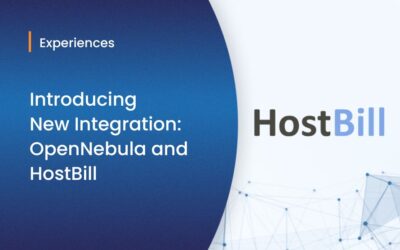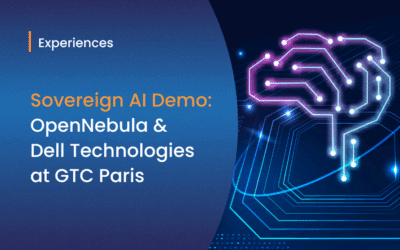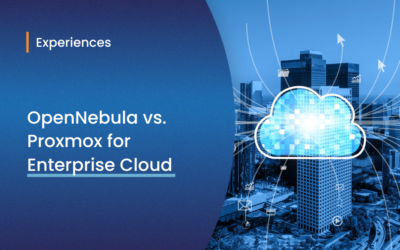Who we are
ARGO-ICT delivers managed IT services and solutions based on open technologies. Ranging from managing a single application to a fully featured private (on-premises) cloud environment.
We focus on delivering a solution that demands the least time possible of the engineers managing it, but also provides clear and traceable logs if something goes wrong and the freedom to make it fit if it doesn’t.
OpenNebula enabled us to deliver these solutions and had a lot more features we could only wish for.
Why we use OpenNebula
The environments of our customers differ a lot. From self-servicing customers to managed customers with environments consisting of virtual machines, kubernetes clusters to complete private cloud deployments. We needed a solution to support it all.
And that is exactly what OpenNebula provides in one functional package, without the need to integrate tens of components with a lot of custom work and bug fixing.
The web interface delivers our self-servicing customers an easy to use portal where they can manage their own environment. OpenNebula’s chargeback feature enabled us to make usage based billing easier than ever.
For managing customer’s environments, it provides us with all the CLI tools, API’s and drivers needed to have the freedom to approach the environment as we like and integrate smoothly.
How we use OpenNebula
We focus on automation and simplicity. To achieve this we use Ansible for configuration management. From the OpenNebula cloud environment itself to our customer environments running on it, we use Ansible to ensure the environment is according to our and our customers needs. We therefore make happily use of the OpenNebula Ansible module.
Maximizing availability using High-Availability setups for our instances was no pain at all to setup using the clearly defined Hooks in OpenNebula. Depending on the state of an instance or host, we can trigger an action. If a compute node all of a sudden goes down, all the instances are migrated to an operational compute node in a matter of seconds.
In order to provide real High-Availability a good storage solution is one of the key parts to prevent data lost and ensure the instance can always reach its own data. Our datastores use Ceph as RBD storage for all of our instances. OpenNebula made it easier then ever to setup using their Ceph RBD drivers, which just works like a charm.
To make things even simpler, we started using the OpenNebula docker-machine driver to enable our container orchestration platform, Rancher, to provision it’s own environments within OpenNebula. This enables us to provide fully operational kubernetes clusters in minutes, with just a few keyboard strokes or an API call.
Never forget the community
Exactly this, the possibility to write a blogpost, perfectly reflects the welcoming community behind the project. But also the rich, easy to follow documentation (with some basic background knowledge), helps a lot during the process.
In summary
OpenNebula is definitely our choice for a cloud management platform, because it is one complete package which contains everything you need without integrating or extensively modifying modules. Thanks to it’s easy to use API’s, Drivers and Hooks, we have a highly available platform that integrates nicely with our configuration management and container orchestration management systems. Almost out of the box.




0 Comments